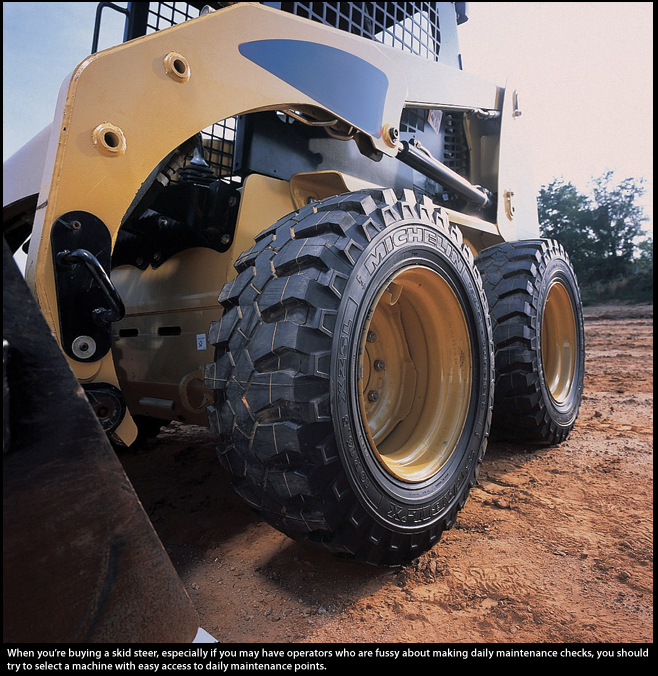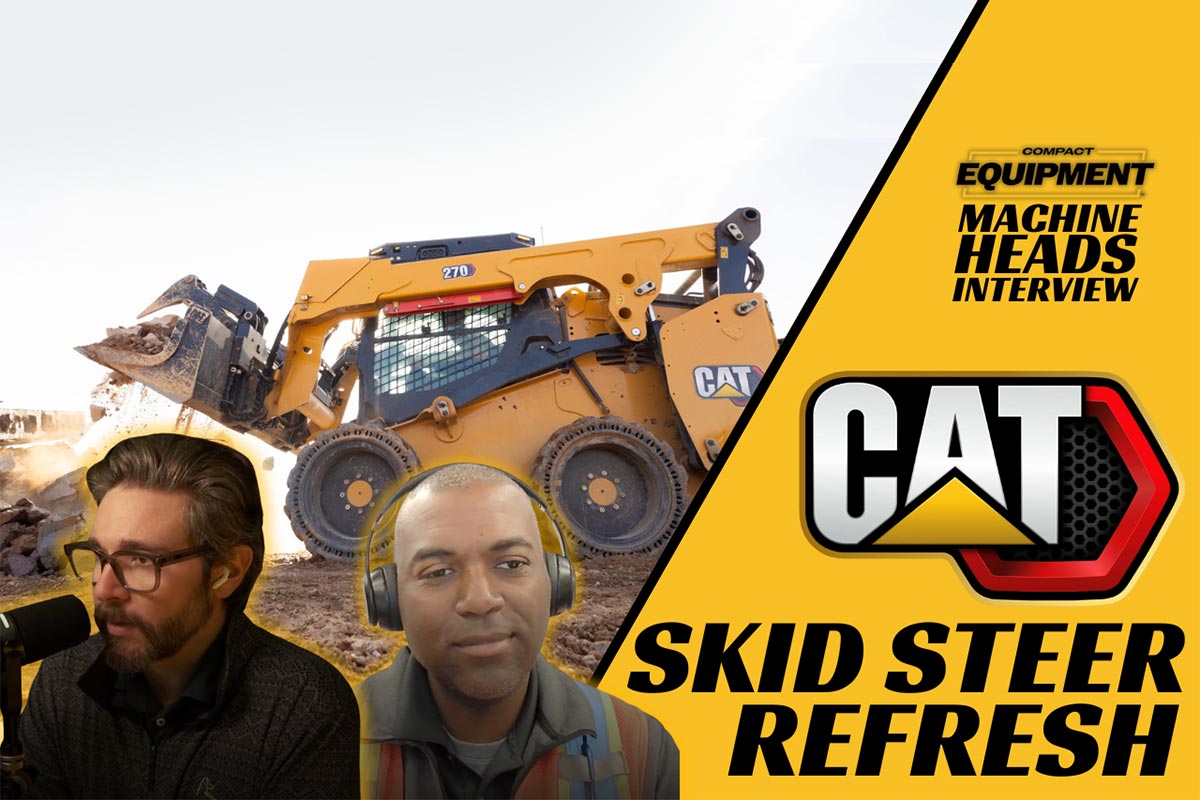Steering Toward Preventative Maintenance

Required maintenance on any type of construction equipment starts with the operator’s manual. That may sound like a hand-off, but the reality is that the engineers and technicians who design and build our skid steers and other equipment do painstaking testing to identify the optimum intervals for checking, filling and lubing. The operator’s manual clearly identifies the task, location and required intervals for all critical maintenance steps.
These are not guesses or even suggestions. When the operator’s manual says, “lube daily,” it really means lube daily. What many people don’t seem to realize is that if you miss one interval, you can’t catch up on it. If you miss lubing a joint one day, lubing that joint twice the next day won’t help, and that one missed day could cost a third of the life of the component or the moving part.
In addition to the operator’s manual, most manufacturers have a maintenance lubrication decal that specifies intervals and locations for critical lube points. Even if a grease fitting or fill point is difficult to reach on a particular model, you need to know that those maintenance points wouldn’t be on the list if they weren’t important.
The key to keeping your skid steer in good running condition is also keeping your diesel engine at top performance. Check to see that the coolant level in the radiator is full and that the radiators aren’t plugged. Make sure that the fans are operating properly. Not all of today’s units are driven by fan belts, so you need to observe the operation to be sure the fan is running smoothly. One of the most important points to pay attention to is fuel quality. You probably don’t give much thought to the gasoline you put in your car, but when it comes to diesel fuel, make sure you are using the blend recommended for your skid steer, and talk to your supplier and demand the good stuff in terms of both blend and cleanliness.
Another key to long, productive operation is tire maintenance. Check regularly to be sure lug nuts are tight and rims aren’t bent. Be sure that tires are correctly and equally inflated. In fact, you should always run same size tires to avoid uneven wear and imbalance. A skid steer’s operation will provide clues to maintenance that may have been missed or that may be required. For instance, poor starting could be indicative of injection system or electrical system issues. Think about how often the advent of the first really cold winter day triggers the purchase of a new battery. Chances are that the skid steer was starting hard for weeks or even months, and the really cold day just pushed the battery over the edge.

A loss of power could indicate that something is binding — for instance that a bearing is going out. But a lack of power is even more likely to be a sign of a plugged fuel filter or a plugged air filter, and those are troubles you will never experience if you are following routine maintenance checks as prescribed in your operator’s manual. Hesitation in the hydraulics could be a sign of a plugged oil filter or a hydraulic pump in need of attention. Or, it could be an indication that the hydraulic system is low on oil — another problem you won’t have if you’re consistently doing routine maintenance.
An alert and careful operator can do a great deal toward maintaining a productive, hard-working skid steer. Believe it or not, the best skid steer operators understand that the “skid steering” the machine is named for inherently causes wear on the machine. They avoid unnecessary turning, using Y-turns whenever practical, rather than pivoting or using counter rotation to turn. When possible, they make their turns when the machine is unloaded rather than loaded.




